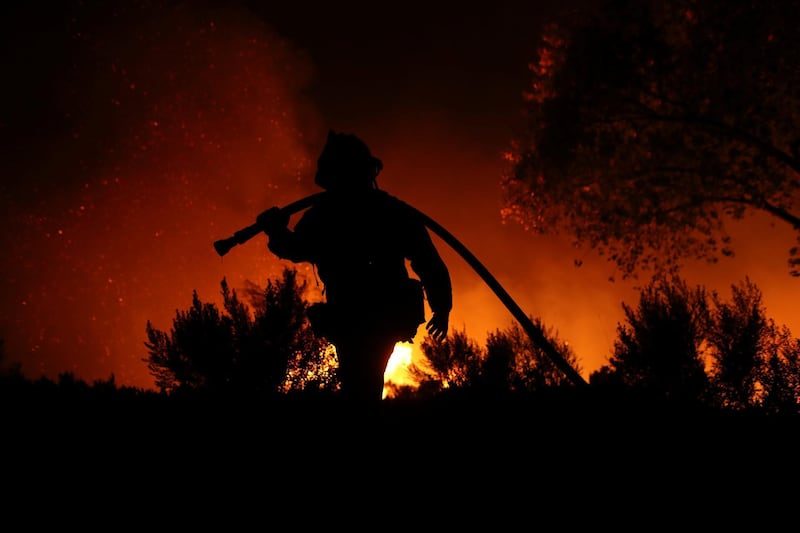“The era of procrastination, of half-measures, of soothing and baffling expedients, of delays, is coming to its close. In its place we are entering a period of consequences.”
The words of Winston Churchill in 1936 could well have prefaced the latest report from the Intergovernmental Panel on Climate Change (IPCC).
The 2015 Paris Agreement called on participants to limit warming well below 2°C, and to try to keep it below 1.5°C. The IPCC’s compilation of existing research was intended to assess the impact of this level of global warming,
World temperatures so far have risen about 1°C, so we are already close to the lower limit, and likely to reach it by 2030-2052, well within both the lifespan of most people reading this article and that of the assets we are building today – power plants, roads, houses, coastal developments.
Summer heat-waves, more damaging hurricanes, forest fires, droughts across Australia, California and the Middle East, and the loss of Arctic ice are already painfully visible. The difference between 1.5°C and 2°C may not sound like much, but it can be enough to trigger irreversible melting of the West Antarctic ice-sheet, kill off virtually all coral reefs, flood ten million more people and expose hundreds of millions more to poverty. Even more worryingly, every additional fraction of warming brings us closer to self-reinforcing tipping points, such as thawing permafrost and releasing methane from wetlands – at which further climate change becomes unstoppable.
Events of the past few years do not carry much hope that the world will deal with climate breakdown in a calm and constructive way. Reactions to the relatively small number of refugees from the war in Syria helped empower authoritarian and extremist politicians across Europe and the US and tip the scales on potentially calamitous decisions such as Brexit. The fallout from natural disasters, state breakdown, famines, civil conflict and waves of climate migrants seems likely to lead to even more toxic and destructive politics, even in countries well-protected from the direct climate impacts. Perhaps a hundred thousand refugees can be stopped by a wall, but ten million cannot.
The IPCC report will not change the minds of any who have decided, from ideology or short-sighted self-interest, to deny reality. Most notably present in climate rogue the US, they also form a noisy, shameful minority with outsize influence in countries such as the UK, Canada and Australia, and even Brazil’s presidential front-runner.
But perhaps more dangerous are those politicians, business-leaders and ordinary citizens and consumers who pay lip-service to climate change but whose actions are far too timid to make a real difference. Then there are the “silver-bullet” monomaniacs, who reject essential parts of the climate solution in favour of their preferred approach.
Most “climate change” policies pursued so far have failed in their ostensible objective: to make sufficient reductions in emissions of carbon dioxide and other greenhouse gases. Thirty years ago, Nasa scientist James Hansen testified to the US Congress on climate, a process that led to the 1997 Kyoto Protocol. Since that testimony, outside recessions, world carbon dioxide emissions have fallen in just one year, 2015.
Climate Action Tracker ranks countries according to their progress on the Paris goals. Only two are on track to meet their share of actions to stay below 1.5°C: Morocco, with an ambitious renewable energy programme, and tiny Gambia. India is the only leading country compatible with the goal of staying below 2°C. The UAE ranks alongside the EU and Australia in the middle of the pack, making some progress but rated as insufficient so far. China, Russia, Japan, Saudi Arabia and the US are falling further short.
_______________
Read more:
Guyana may be the next big beast in global oil
New businesses spurring diversification for oil-producing states
_______________
Those three decades have not been entirely wasted. We have developed key parts of the toolkit for reducing emissions – more efficient energy use, replacing coal with gas, affordable and reliable renewable power and electric vehicles, carbon capture and storage. Another key technology, nuclear power, has unfortunately gone backwards in most developed countries.
Deployment of these approaches is taking off, but has been far too slow. Decarbonisation at the rate of the IPCC’s “middle of the road” scenarios, with emissions falling about 2.6 per cent per year to 2030, has been achieved this century by one country, Denmark, while the UK, dropping 2 per cent annually, is not far off. So this goal is not impossible, but certainly very challenging.
Adapting to the already-changing climate – sensible coastal development, drought-resistant crops, more careful water use – is further behind, particularly in supporting poorer countries.
After 2030, ever-greater efforts will be needed actively to remove carbon dioxide from the atmosphere, a task that has hardly started. And our delays make it very likely we will need some kind of geo-engineering to cool the planet, although the IPCC deliberately did not consider that.
Most of all, the world has not created a robust system, beyond the often vague and non-binding Paris pledges, to encourage and demand emissions reductions. And the international political order – under serious strain for non-climate reasons – must be rebuilt to deal with climate disasters, conflicts, migrations and depressions, and create a cleaner, fairer world.
Instead of half-measures, we need full measures, and in the face of consequences, we need action.
Robin M. Mills is CEO of Qamar Energy, and author of The Myth of the Oil Crisis






